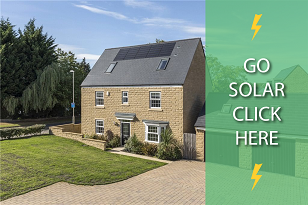After you make the decision to transition to solar energy for your power source, one of the first steps in that process is to decide where to place your solar panels. Of course, when we install your solar panels, we will assist you with this your solar panel direction, but every client should understand what we are aiming to achieve when setting up your system. If you live in the Northern Hemisphere, your solar panels should always face true south.
The direction of your solar panels determines how much light the panels actually receive, and therefore how effective they are at producing energy. If your solar panel direction points to true south, they will receive sunlight throughout each day, which will provide you with as much solar energy as possible. This translates to maximum savings on your energy bill.
South Versus True South – What’s the Difference?
There is a difference between south, as shown on a compass, and true south. When you look at a compass, it is pointing toward the south pole of the Earth’s geomagnetic field. South as displayed on a compass is more of a general south: for placement of your solar panels, you need a more specific calculation – true south. A compass doesn’t show true south because the Earth’s outer core, made of iron and nickel, forces the needle of a compass slightly away from true south. This pull away from true south is known as magnetic declination. Both the degree to which magnetic declination affects your variation from true south and the direction which it moves the needle from true south are affected by your geographic location.
Your solar panels must be installed facing true south, or geographic south, rather than south as shown on a compass. So, how do we figure out where true south is? Well, we calculate magnetic declination for your area in order to determine true south. Another way to do this is to figure out true north by looking at shadows at noon. At noon, shadows from vertical items will run north-south. Another easy way to find true south is to look at Google Earth on your computer. Just zoom in on your house, and look at the north/south gridlines.
What If My Roof Doesn’t Face South?
There are several options for you if your roof is situated in an east-west fashion. If your solar panels must face east or west, you can compensate for the limited amount of sunlight that they will collect by increasing the collection area. To do so, you can use additional panels or larger panels. Another option is to have the panels installed on racks that turn them to face true south.
Finally, you can mount your solar panels on some other surface instead of your roof so that they face south. You can mount the solar panels on a south-facing wall, or even on the ground. When you mount solar panels on the ground, you can put them on a tracking system so that they can be adjusted at various times of year in order to capture the most sunlight possible.
These options may also prove beneficial if your roof does face south, but is blocked from the sunlight by trees or buildings.
Once location has been determined, we will install your solar panels at the best tilt angle based on your specific latitude.
If you are interested in using solar energy to provide alternative, low-cost energy to your home or business, contact Green Power Technology.


